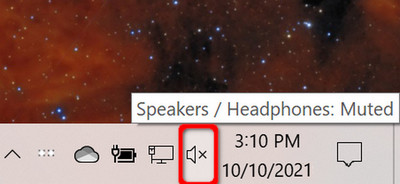
■From the displayed list, go to Preferences. ■Once opened, go to the Tools menu from the menu bar. ■Initialize the VLC Player by double-clicking its icon, or by opening any audio or video file in the application.

#Windows 10 volume scroll not going up how to#
While Microsoft removed the Hardware and Devices troubleshooter from Windows 10s settings, you can still access it through the Command Prompt.Here is how to do it: In the Start menu search bar, search for command prompt and select Run as administrator. ■Log on to the computer using the account in which you are experiencing the problem while using the VLC Player. Run the Hardware and Devices Troubleshooter. In such case, this tutorial will help you out to rectify the issue and get the default settings back.īy following the instructions given in this tutorial, you will be able to get the mouse wheel controlling the volume of the VLC Player feature work.

After opening such document or web page, you can move the mouse wheel up or down to check if it is functioning properly and the document or the web page are scrolling up or down as expected.Īssuming that your mouse wheel is functioning properly, the next possibility is that your instance of VLC Player has been misconfigured either automatically or manually by any incompatible third-party application or by any other person respectively. You can do so by opening any document or web page that has vertical scrollbar. If your instance of VLC Player no long responds to the mouse wheel movements, your first step should be to check if the mouse wheel is working properly and is not faulty. Likewise, when the mouse wheel is moved down, the volume decreases. When the mouse wheel is moved up, the volume increases. It would benefit from a few additional features, but it is a great option for users who can’t rely on media keys to control sound volume.As per VLC Player’s default configuration, every time the program is used to play the audio or video file, its volume can be controlled by moving the mouse wheel up or down. On the whole, Volume Scroller is a pretty impressive app that works very well. Control your PC’s volume more easily than ever Also, more color options would be very welcome. A few small improvements would be welcome in future releases, but there are no major issues to mention.įor starters, it would be great if users had the option of customizing the step size, or how much the volume is altered with a single scroll at present, the audio level is modified by four units, which may be too much for some.Īs far as the icon design is concerned, it can be difficult to read the indicator when the volume is very low, which is why an alternative icon would be great. Well-designed app that does, however, need a couple of tweaksįor the most part, I was quite impressed by Volume Scroller.

Additionally, you can mute all sound by left-clicking the icon. If you wish to increase or decrease the volume, you just need to move the mouse cursor over the app’s tray icon and scroll up or down. When it comes to using the app, things could hardly be simpler. Once installed, Volume Scroller will be launched automatically whenever you boot up your PC. The setup procedure is nothing if not straightforward, and the application is added to the startup list automatically. Volume Scroller is a small, easy-to-use program that runs in the system tray and enables you to control the system volume by placing the mouse cursor over its icon and scrolling up or down.

If your keyboard isn’t equipped with them, however, or if you want another alternative, you should take a look at this app. There are several ways to make quick volume adjustments in Windows, perhaps the easiest being the use of media keys.


 0 kommentar(er)
0 kommentar(er)
